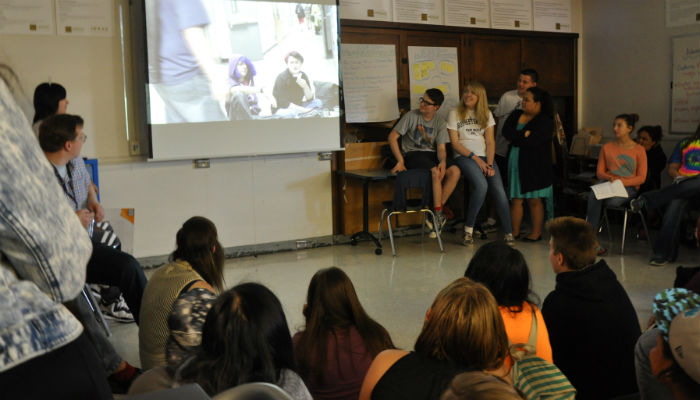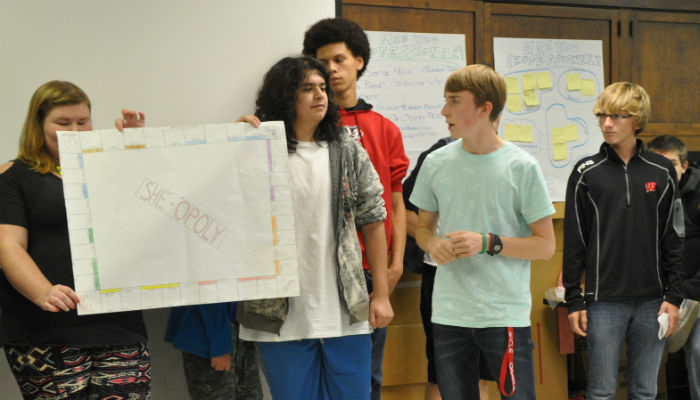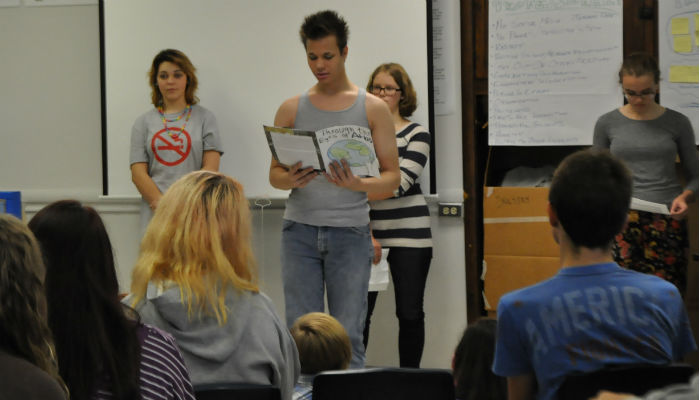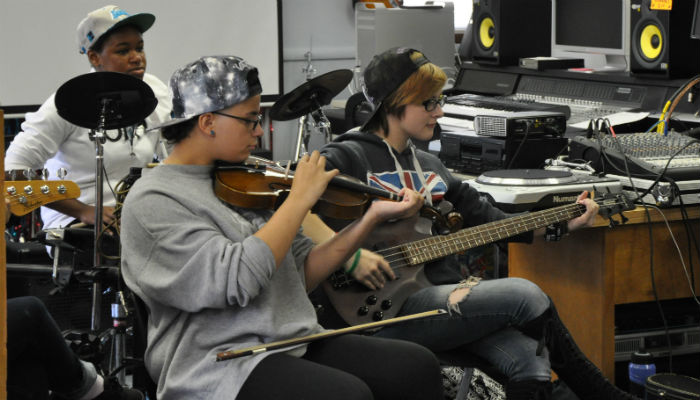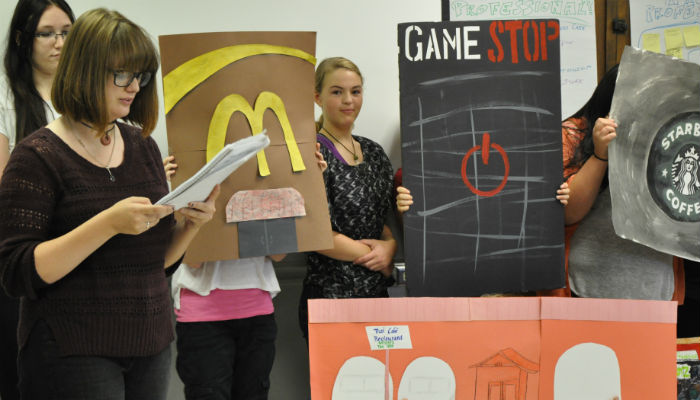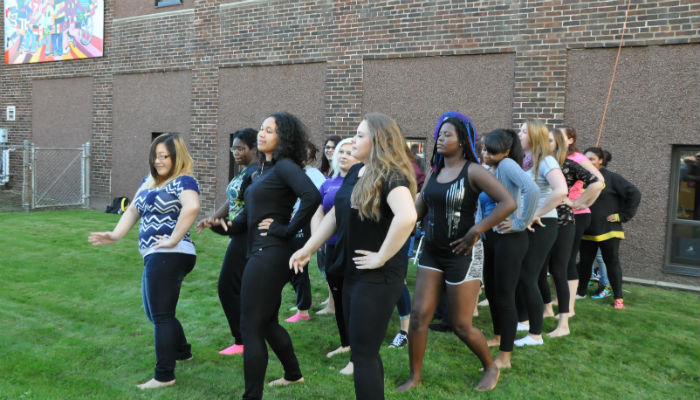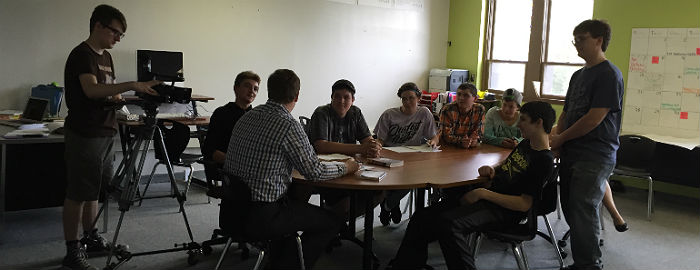
IDEAS Academy is located in the heart of Sheboygan, just a walk away from the Sheboygan River, Fountain Park, John Michael Kohler Arts Center, Lake Michigan, Mead Library, and 8th Street. This affords many opportunities for the community to become our school and for our school to impact the community. In the first two weeks of school, IDEAS Academy students engaged in a very intentional dialogue about community through two rapid, collaborative experiences using the creative process.
Student groups were asked to consider the question "How can we improve our community?" by observing their community, generating additional questions to explore, researching the relative facts surrounding their questions, interpreting their understandings through art forms, exhibiting their work to their school community, and reflecting on their Habits of Professionalism - especially communication, collaboration, and learning.
We spent one afternoon observing downtown Sheboygan - treating it as a living gallery. Student groups walked to South Pier, Commerce Street, the Farmer's Market, and seven other alcoves in the city. Creative explorations took place in these local spaces to deepen observations. For example, a mosaic of texture rubbings from different surfaces or movements made based on specific architecture or photographs depicting the intersection of nature and industry. These explorations exposed some needs of the community and provoked new questions.

During day-long 'Micro Projects' and week-long 'Mini Projects' student groups were challenged to take their observations of the city through the creative process to not only explore ways they could improve their community but also to communicate those solutions through different, impactful art forms. Using the Question Starts thinking routine, students first generated specific questions to drive their "community" projects: "How can we change the perception of Sheboygan for the people who live here?" "How can we get more people to participate in the arts scene?""How would the quality of life change, if we improved the overall health of the ecosystem?" "What is the best use of empty lots and abandoned buildings?"
The groups then embarked on a course of research, addressing their questions by reading credible, academic sources and reviewing local data with primary sources. The research experience was an introduction for students to some elements of argument - synthesizing viewpoints and supporting a claim with evidence - and it encouraged them to consider their audiences' need for background information. Even though a period of research is typically weeks or months long, when students get into their semester-long independent projects, this rapid experience brings urgency to their responsibility of consulting experts. Not only will their solutions be more viable as a result, but their art will be more compelling. When 15-25 people engage in research on a deadline, it exposes how divergent thinking on a topic can lead to complex understandings and innovation.
After research, students determined how to communicate their claims through an art form. Doing this collaboratively required clear communication and a process for building consensus. The rapid pace of this process, again, encourages flexible thinking and innovative solutions, because students are motivated to consider many different ideas on the topic. The pressure was focused on clarifying an idea that they had ownership of, not to find a prescribed or correct answer. At the end of Mini-Project Week, student groups exhibited complete projects in film, engineering, science, dance, creative writing, music, and visual art. (Pictured below.)
These project experiences at the beginning of the school year serve as a foundational experience for students in many respects. Our focus on community was intentional, providing opportunities for students to meditate on the relationships that they build and interactions they value in collaboration. The introduction to the creative process, working with authentic questions and problems, sets up each student in the school with a common experience that will extend into our disciplinary classes, seminars, and, of course, IDEAS Project Block.

